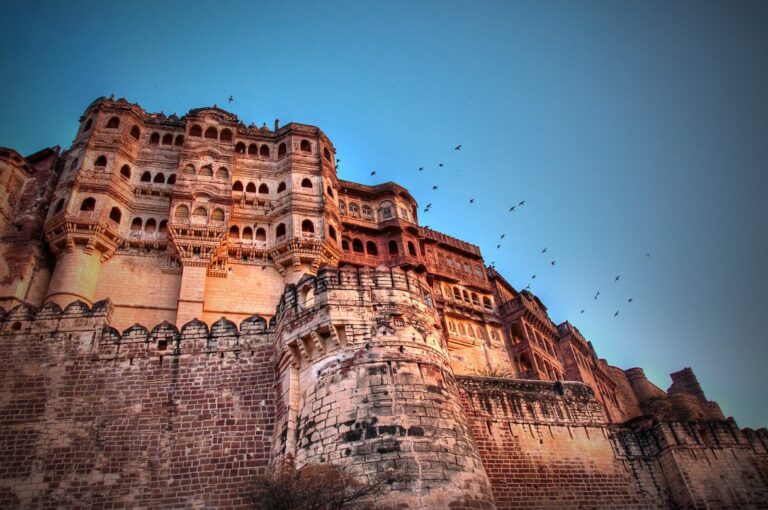India is a country of rich diversity. It is the largest democratic nation and accumulates a vast culture. Talking about the demographic, this secular nation accumulates people from every religion, culture, linguistics and tribes. It offers you a variety of geographical locations, climate, natural vegetation- flora and fauna. Living in India provides its residents a vibrant feel and thus, it is called a nation of “unity in diversity”.
India shares its borders with China, Afghanistan, Myanmar, Bhutan, Pakistan, Bangladesh and Nepal. It also enjoys one of the lengthiest coastlines in the world, with many of its states touching the Pacific ocean in the Bay of Bengal or Arabian sea. It is diverse in terms of climatic conditions as one part of India can have the temperature of 45 degrees celsius while the another may see traces of snowfall as well.
1. India has a variety of Cuisines to offer
Food, shelter and clothings are the essential part of life. But when it comes to a great food embedded with delicious offerings, life becomes even great. Since the ancient times, India has been the epicentre of adding taste to whatever food you are enjoying on your dinner table today. Known as the country of spices, India attracted plenty of Portuguese, French and American traders for long.
There are different food pattern and eating habits across the nation. However, you can majorly partition it in two parts. The first part of India enjoys food with plenty of spices while South Indians love food with mild spices and coconut oil. Next time when you visit India, do not forget to try Chicken and paneer recipes. If you encourage plain food, try having dosas.
2. There are variety of places in India
If I were to name what India has the best in it, I would undoubtedly name its diversity in terms of places. This secular country had seen rulers from different origin. Muslim and Rajaputa rulers ruled India until British defeated them and gained direct control of it for more than two centuries. In those 200 years, some parts of India like Goa were occupied by Portuguese and few by people of dutch and french origin. Years later, when India gained independence, they left the country but couldn’t leave their traces.
Having said that, India has a variety of places ranging from beautiful monuments, mesmerising forts, mountains, parks, memorials and structures. The Taj Mahal in Agra, one of the seven wonders in the world depicts the glorious Mughal era. In Goa, you would find the historical Three kings church made by Portuguese while the city of Puducherry has a french touch. The presence of spook element in some of these most haunted places in India adds another feather to country’s diversity.
If you love trekking, India could be your next favourite location. It comprises of the Aravali, Vindhyanchal, Satpura and Trans Himalayan range. Some of the famous hiking destinations in India include Manali, Munnar, Dharamshala, Rishikesh and others. Due to the lower expenses and immersive adventurous experiences, India has become the the first choice for travellers these days.
3. Abundant availability of Art
If art is what allures you, India should be the place for you. Though the eighth schedule of Indian constitution lists only 22 languages, there are hundreds of unrecognised one which finds a place in the pens of several creative writers. Be it the Tagore’s Geetanjali that got a Nobel in 1913 or, Amartya sen and S. Chandrashekhar; India excels in art and sciences.
Talking about the art forms, India has six recognised classical dance forms and hundreds of folk dance forms. On the other hand, while you may have heard about Bollywood, India has 11 other regional film industries that does a business of billions of dollars per annum, providing a constant entertainment to Indians belonging from every language and cultural forms.
4. India’s variable Weather
Due to India’s geographical variability, there are climatic differences across the country. The northern and North eastern part of India is attached to the Himalayan region and hence, the weather remains extreme at times. On the other hands, coastal areas like Gujarat, Goa and Karnataka offers a mild temperature throughout the year.
Generally speaking, In the Gangetic plain and other parts, India has four distinct weather seasons- Spring, Summer, winter and fall. The maximum temperature can go upto 123 degrees Fahrenheit and it usually touches the graph as low as – 60 degrees celsius. Although, the weather is mostly hot and humid and you would need the woollen clothes for months ranging from December to February.
5. India has a diverse plantation
India is home to many kinds of plantations, thanks to the rich water sources viz. rivers, lakes, ponds and wells. It has a viability of ground water making feasible to grow crops like rice, Soybean, Millet and Maize. On the other hand, in some parts there is a cold climate, allowing the production of Tea and coffee as well.
The country’s wide soil demography allows it to produce various crops. Maharashtra’s black soil facilitate in cotton production while Karnataka’s Laterite soil makes it one of the highest producing coarse cereals and coffee. India is world’s largest producer of milk, pulses and jute and ranks the second largest producer of sugarcane, rice, wheat and vegetables.
